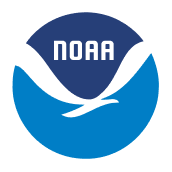GSD co-hosts workshop to demonstrate aviation tools that support forecasters
GSD Forecast Impact and Quality Assessment Section (FIQAS) scientists are co-hosting a workshop to demonstrate GSD experimental tools to NWS meteorologists from the Aviation Weather Center and 21 aviation-focused regional offices. The workshop will be held on April 25-26, 2019 at the FAA‘s Air Traffic Control System Command Center (ATCSCC) in Warrenton, VA. Co-hosts include the National Aviation Meteorologists from ATCSCC and members of the Aviation and Space Weather Services Branch of the Analyze, Forecast, and Support Office (AFSO) of the NWS.
NWS Center Weather Service Units as well as National Aviation Meteorologists at the Command Center provide decision-support services including routine and on-demand briefings containing weather forecast information critical to FAA Traffic Flow Management decisions. They also produce the Traffic Flow Management Convective Forecast (TCF) — a high-confidence graphical representation of forecasted convection considered impactful to aviation operations. The NWS, airlines, and the FAA use the TCF to balance traffic demand. This capability is critical because with 5,000 aircraft in the sky at any given time, weather delays cost air travelers billions of dollars each year.
A GSD tool has been designed to help forecasters produce TCF forecasts, supported by funding from the NWS. GSD’s INtegrated Support for air Traffic Environments (INSITE) tool combines current and historical air traffic with real-time and forecast models of convective weather to generate a “heat map,” or an overview of areas where thunderstorms could limit air traffic flow (Figure 1).
They will also demonstrate an automated web-based tool that provides ongoing performance measures of the TCF known as the Convective Weather Verification Service (CWVS). This tool uses the technique from INSITE to translate both the TCF and radar observations into airspace constraint fields that identify potential impacts to aviation operations (Figure 2). The forecasts are then verified from a meteorological perspective, which compares radar reflectivity and echo tops to the TCF polygons, and from a user perspective, which compares the TCF- and radar-derived constraint fields.
Researchers will collect feedback from the forecasters on what performance information they find useful and could be included in future tool enhancements. This work is funded by an OAR JTTI grant.
For more information, contact Susan Cobb at 303-497-5093
Our Mission
Lead research and directed development through the transition of environmental data, models, products, tools, and services to support commerce, protect life and property, and promote a scientifically literate public.
Research Areas
Organizational Excellence, Earth System Prediction, Advanced Technologies, and Decision Support are the foundation to achieving the GSL Grand Challenge: Deliver actionable global storm-scale prediction and environmental information through advanced technologies to serve society.
Global Systems Laboratory

